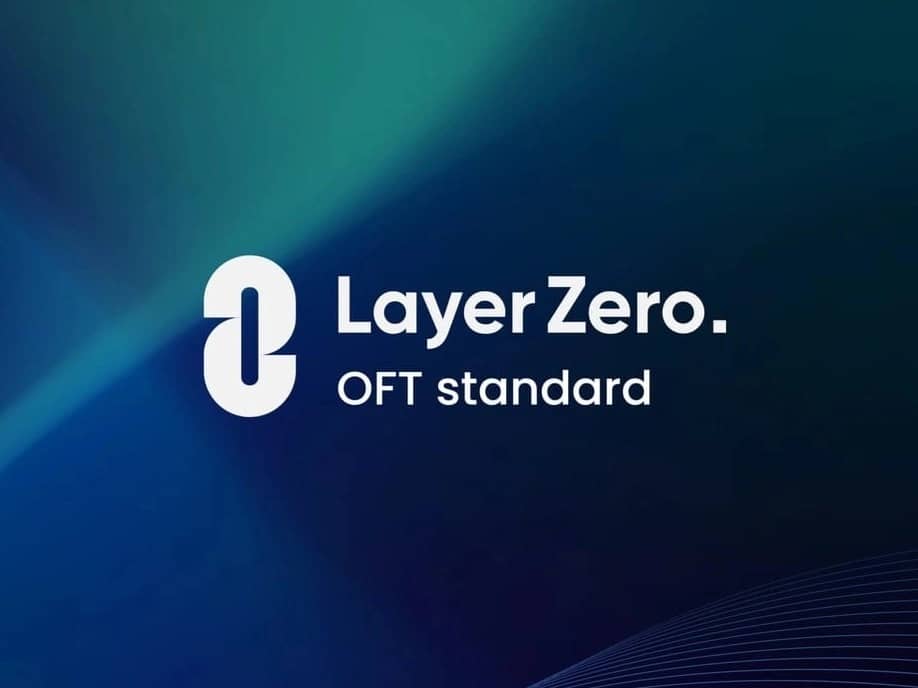订阅 wiki
Share wiki
Bookmark
OFT (Omnichain Fungible Token)
OFT (Omnichain Fungible Token)
全链同质化代币 (OFT) 是由 LayerZero Labs 开发的一种代币标准,旨在创建能够原生存在于多个区块链网络中的同质化代币。该标准使单个代币能够在所有支持的链上保持统一的供应和无缝的可转移性,从而解决了传统跨链桥和封装资产常见的流动性碎片化问题。 [5] [2]
概述
不同的 区块链 生态系统的激增导致了一个被称为流动性碎片化的重大挑战。当一个代币部署在多个链上时,它通常以单独的、不可互换的版本存在,例如 以太坊 上的原生代币和另一个网络上的“包装”合成等价物。这种分离分割了代币的流动性,使用户体验复杂化,并引入了与管理这些包装资产的桥相关的安全风险。许多 区块链 网络独立运作,阻碍了资产和数据在它们之间的无缝传输。 [3] [4] [6]
OFT 标准的创建是为了解决这个问题,它为代币的单一、规范版本建立了一个框架,该版本是部署它的每个链的原生版本。这种方法被描述为“全链”,其中资产同时存在于所有链上,具有共享状态,而不是“跨链”,后者通常涉及将代币从一个孤立的环境移动到另一个环境。通过利用 LayerZero 消息传递协议(一种支持区块链之间直接通信的开源互操作性协议),OFT 可以通过更新每个链上的供应量同时保持全局总供应量不变的过程在网络之间传输。这创建了一个具有整合流动性的统一资产,从而实现更高效的资本流动和简化的用户体验。 [5] [4] [7]
历史
OFT标准由 LayerZero Labs 开发,于 2022 年 5 月左右投入生产。在接下来的一年中,该标准的使用率不断提高。2023 年 2 月,去中心化金融应用程序 Trader Joe 采用 OFT 标准用于其原生代币 JOE。2023 年 4 月,LayerZero Labs,该协议背后的开发团队,在 B 轮融资中筹集了 1.2 亿美元,估值为 30 亿美元,投资者包括 Sequoia、a16z 和 Coinbase Ventures。 [7] 同月,流动性 质押 协议 unshETH 将其代币转换为 OFT,以将其业务从 Ethereum 扩展到 BNB Chain。2023 年 10 月,Lido 的 Wrapped Staked Ether (wstETH) 也采用了 OFT 标准,使其 流动性 质押 代币能够在不同的网络之间移动。截至 2024 年 2 月,LayerZero Labs 报告称,已有超过 100 个项目采用了该标准,在其支持的网络中实现了超过 45 亿美元的总转移量。 [5]
技术
OFT标准是建立在LayerZero互操作性协议之上的特定于应用程序的实现。它的功能依赖于协议的消息传递能力和安全架构来促进代币转移。
核心转移机制
OFT使用类似于借贷记账的系统来管理跨链的代币供应。它不包装资产,而是通过LayerZero发送消息,指示源链和目标链上的代币合约调整其本地供应。这是通过两种主要模型实现的。 [3]
销毁和铸造
此机制通常用于从一开始就作为原生 OFT 创建的代币。过程如下:
- 用户发起从源链到目标链转移指定数量的 OFT 的请求。
- 源链上的代币合约销毁(销毁)指定数量的代币。
- 通过 LayerZero 协议向目标链发送消息,其中包含交易的详细信息。
- 成功验证消息后,目标链上的代币合约铸造(创建)等量的 OFT。
此过程确保代币的总流通供应量在所有网络中保持不变。 [2] [4]
Lock-and-Mint/Unlock
对于最初并非设计为OFT(例如,标准ERC-20)的现有代币,此机制允许它们获得全链功能,而无需更改其原始合约。
- 用户在其原生链上的专用合约(适配器或扩展)中锁定指定数量的原始代币。
- 此操作会触发一条 LayerZero 消息到目标链,然后在目标链上铸造等量的OFT版本的代币。
- 要将代币返回到原生链,OFT版本会在辅助链上被销毁。这会触发一条消息返回到原生链,以从合约中解锁原始代币。
此模型有效地将现有资产扩展到其他链,同时保留其在主网络上的原始形式。 [3]
OFT Adapter
OFT适配器是锁定和铸造模式的一种特定实现。它是一个中间智能合约,包装现有的单链代币,使其具有全链功能。当用户想要将代币转移到另一个链时,原始代币会被存入并锁定在源链上的适配器合约中。然后,适配器通过LayerZero进行通信,以在目标链上铸造OFT版本。一旦在其他链上,该代币将作为标准OFT运行,使用燃烧和铸造机制在非原生链之间进行后续转移。 [5]
底层协议和架构
OFT标准是由 LayerZero 定义的更通用的 OApp (全链应用) 标准 的一个特定应用。它使用 OApp 接口进行通用的跨链消息传递。所有交易都通过每个链上的 LayerZero Endpoint 合约路由,该合约负责管理消息传递、安全验证和费用支付。OFT 标准在 LayerZero 的链上智能合约网络上运行,这些合约被称为 Endpoints。一个 Endpoint 部署在每个支持的 区块链 上,从而创建一个统一的网络来发送和接收消息。 [7] [6]
为了以经济高效的方式实现这种通信,LayerZero 利用了一个称为 超轻节点 (ULN) 的概念。ULN 不是维护一个完整的链上轻 节点(这可能很昂贵),而是在发送跨链消息时按需从去中心化 预言机 流式传输 区块 头。这种方法显著降低了与跨不同网络验证交易相关的链上占用空间和成本。 [7]
该标准被设计为与虚拟机 (VM) 无关,具有适用于基于 EVM 的链、Solana 和 Aptos Move 的实现,允许开发人员在不同的 区块链 环境中使用一致的框架。 [2]
安全模型
OFT传输的安全性继承自底层 LayerZero 协议,该协议提供了一个可配置且主动的安全框架。
初始 V1 机制:预言机和中继器
LayerZero 协议的初始版本依赖于链下预言机和中继器的组合。预言机负责将源链的区块头转发到目标链,而中继器独立提交交易证明。只有当预言机的区块头和中继器的交易证明匹配时,目标链上的交易才被认为是有效的。这种双重验证旨在确保安全性,因为它需要两个独立的链下实体在交易最终确定之前就交易状态达成一致。 [7] [6]
去中心化验证者网络 (DVN)
LayerZero 的安全模型是模块化的,允许像 OFT 这样的应用程序选择他们自己的一组独立的验证者,这些验证者被称为去中心化验证者网络 (DVN)。代币发行者可以通过选择一个或多个 DVN 来验证跨链消息,从而配置自定义安全堆栈,而不是依赖于单个实体或固定的验证器集。这在平衡安全性、成本和速度方面提供了灵活性。 [5] [4]
Pre-Crime
Pre-Crime是一种额外的安全层,它作为一种主动的威胁预防机制。在跨链交易于目标链上最终确定之前,会通过模拟来预测其结果。如果模拟检测到恶意结果,例如合约漏洞或违反预定义的安全规则(例如,铸造的代币多于销毁的代币),系统可以标记并阻止该交易执行,从而防止潜在的损害。 [5] [4]
主要特性
与传统的跨链代币解决方案相比,OFT 标准提供了几个不同的特性。
统一的流动性和供应
根据设计,OFT 在所有网络上维护单一的全局供应。 这消除了为不同链上代币的包装版本设置单独流动性池的需求,从而整合了流动性,并可能通过降低交易者的滑点来提高市场效率。 [3]
合约所有权和控制权
代币发行者保留对其在每个链上的OFT合约的完全所有权和控制权。LayerZero Labs不保管资产,也无法更改应用程序的安全配置。这种非托管方法降低了交易对手风险。代币发行者还可以在转账时实施可选的费用结构,以从其代币的跨链活动中产生收入。 [5]
资本效率
OFT传输是直接的点对点供应转移,不依赖流动性池进行桥接。因此,传输不受滑点影响。OFT传输的成本仅限于源链和目标链上的gas费用,以及LayerZero协议的验证者和执行者的费用。 [3]
通用语义和可组合性
OFT在每个部署的区块链上都表现为原生代币。这为用户提供了一致的体验,并简化了开发者的集成。由于OFT不是合成或包装资产,因此可以更容易地在去中心化金融(DeFi)应用中组合,例如跨不同生态系统的借贷协议、去中心化交易所和收益聚合器。跨链OFT转移还可以与附加指令捆绑在一起,允许单个跨链交易执行复杂的操作,例如在代币到达后立即在目标DEX上交换代币。[2]
Gas 抽象
当使用 LayerZero 执行器时,OFT 标准支持 gas 抽象。此功能允许用户支付整个跨链交易的费用,包括目标链上的 gas 费用,只需使用源链的本地代币进行单笔交易。这简化了用户体验,无需为不同的网络持有多个 gas 代币。 [5]
采用和用例
截至2024年2月,OFT标准已被超过100个项目采用,并支持超过45个区块链网络。该标准被各种类型的代币用于扩展其在多链环境中的效用。OFT标准是超越简单资产转移的各种跨链功能的基础技术。它作为去中心化交易所(DEX)上跨链交换、允许多个网络上针对抵押品进行借贷的多链货币市场以及统一的跨链治理系统等应用的基础技术。 [5] [7]
稳定币
- Angle (agEUR): 最大的去中心化欧元挂钩稳定币,agEUR,使用 OFT 标准在 11 条链上原生存在。
- Abracadabra (MIM): MIM 稳定币 是首批采用该标准的稳定币之一,使其可在 11 条链上使用。
区块链代币
- 比特币 (BTC.b): 比特币 的一个版本,桥接到 Avalanche 网络,BTC.b 利用 OFT 标准将其存在扩展到其他 LayerZero 支持的网络。
- Metis (METIS): Metis Layer 2 网络的本地代币使用 OFT 标准来增强其跨链功能。
DeFi 代币
- Trader Joe (JOE): Trader Joe 去中心化交易所的治理和实用代币是一种 OFT,使其能够在 DEX 部署的多个链上运行。
- Radiant (RDNT): Radiant Capital 跨链借贷协议的治理代币使用 OFT 标准。
- Pendle (PENDLE): Pendle 收益代币化协议的治理代币,该协议利用 LayerZero 进行跨链治理。
流动性质押和再质押代币
发现错误了吗?
